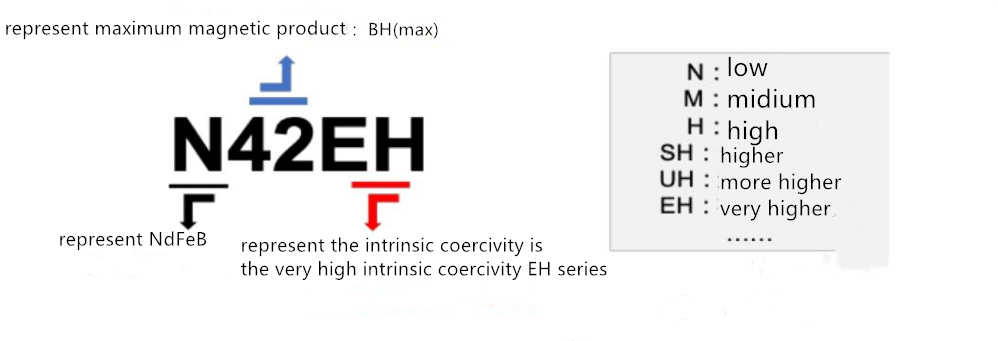Curie temperature and operating temperature of sintered NdFe

Last time we introduced the meaning of different grades of sintered Ndfeb, different grades have different properties. In short, the number represents the product’s maximum magnetic energy product, the larger the number, the greater the maximum magnetic energy product; the letter after the number represents the classification of its intrinsic coercivity, the further back the brand ,the greater the intrinsic coercivity.


After understanding the grade of sintered NdFeb, you will surely ask: what is the relationship between temperature and the magnetism of NdFeB products? Is the operating temperature the same for different grades? What is the upper limit of heat-resisting operating temperature? Today we will introduce the operating temperature of sintered NdFeb to you.
When it comes to the relationship between temperature and magnetism, we first need to understand the concept of ”curie temperature”. Does the word “Curie” sound familiar to you? Think of the famous Madam Curie? This concept has a little bit to do with Madam Curie.
More than two hundreds years ago a famous physicist discovered a physical property of magnetite in his laboratory, that’s when a magnet is heated to a certain temperature, its original magnetism disappears, the great physicist was Madam Curie’s husband, Pierre Curie, later people called this temperature Curie Point, also known as Curie Temperature, Tc or magnetic transition point.
Definition: The Curie temperature is the temperature at which a magnetic material changes between a ferromagnet and paramagnetic material, below the Curie temperature the material becomes a ferromagnet, where the magnetic field associated with the material is difficult to change. When the temperature is higher than the Curie temperature, the material becomes a paramagnetic, and the magnetic field of the magnet is easy to change with the change of the surrounding magnetic field.
Numerical value: the Curie temperature represents the theoretical operating temperature limit of magnetic materials, the Curie temperature of NdFeB is 320-380 degrees celsius, the height of Curie point is related to the crystal structure formed by magnetic sintering.
What happens when you exceed the Curie temperature? If the temperature reaches Curie temperature, the molecules in the magnet move violently demagnetize, which is irreversible.
After Curie temperature let’s talk about working temperature,Tw. Actually Curie temperature is really just the temperature under laboratory conditions, or we could say the ideal temperature, the working temperature of a magnet is the maximum temperature at which a material can remain magnetic in practice. The highest working temperature of sintered NdFeb is much lower than its Curie temperature. At the working temperature, the magnetic force decreases as the temperature rises, but most of it recovers as it cools.
Relationship between working temperature and Curie temperature: the higher the curie temperature is, the higher the working temperature of magnetic materialis, and the temperature stability is better. Adding Cobalt,terbium,dysprosium and other elements to the raw materials of sintered NdFeB can raise the Curie temperature.
The maximum operating temperature of sintered NdFeb depends on its magnetic properties and the selection of working point. For the same sintered NdFeB magnet, the more closed the working circuit, the higher the maximum operating temperature of magnet, the more stable the performance of the magnet. Therefore, the maximum operating temperature of the magnet is not a fixed value, but varies with the closure of the magnetic circuit. Under the premise of a given working point, the maximum working temperature and Curie temperature of each grade of sintered NdFeb magnet are as follows:

